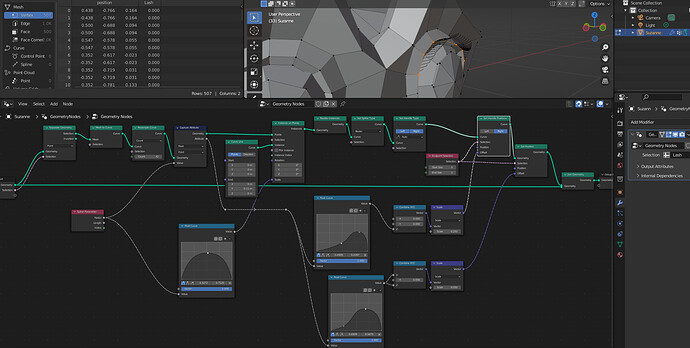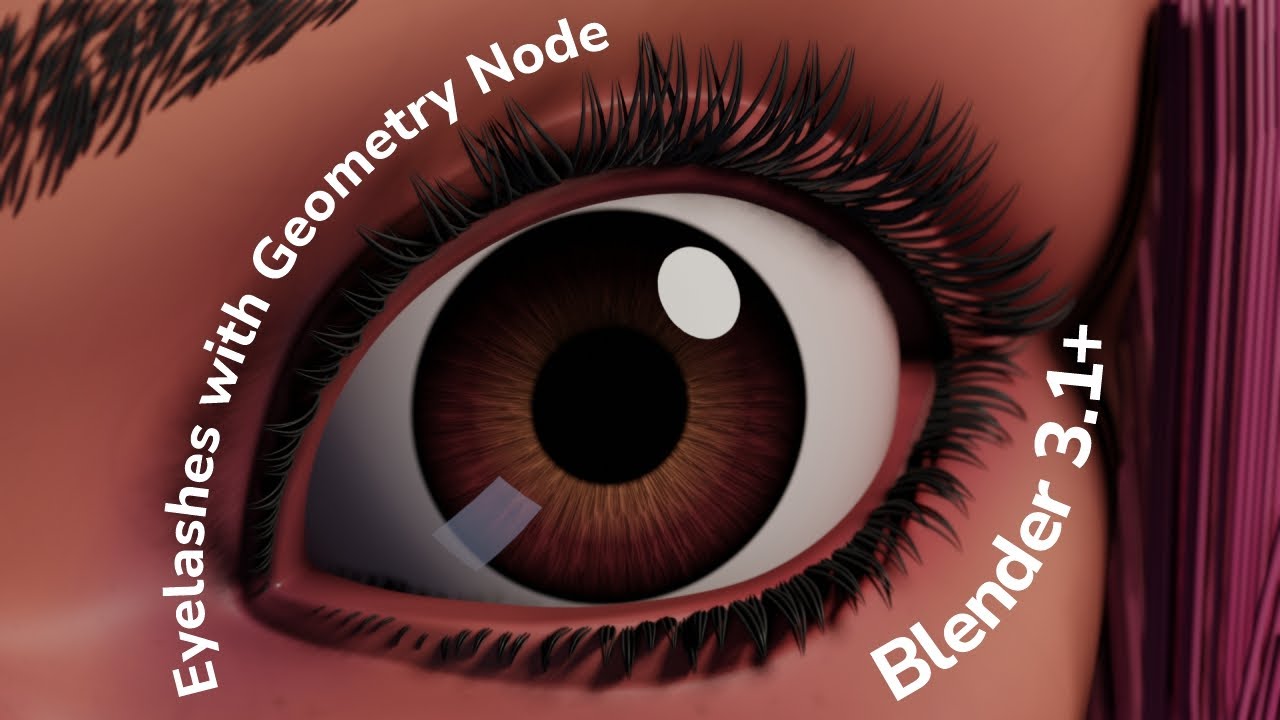Hi All,
Looking for some help/advice in relation to the new Hair system in Blender 3.3 and Geometry Nodes.
First up, I totally suck at Geometry Nodes, just can’t get my head around most of it and hence the need for the help.
The Idea
Given the new hair curves in Blender 3.3, I have this ‘vision’ of maybe a Geometry Nodes driven setup of just being able to place a few ‘guide hairs’ for eyelashes or eyebrows and then being able to tweak a bunch of parameters via geometry Nodes and you can have all sorts of eyelashes or eyebrows.
Now I know you can just do it all via the grooming tools, but then you have to do that every time. It would be way more flexible to just add a few guild hairs (like the start, end, along with a few in the middle to define general shape and direction) and then adjust the length, the bending angle, how ‘bushy’ or pencil thin the eyebrows are, etc, etc all via a few Geometry Node values and maybe the odd Float Curve and the like.
So, first question, is this even possible and if so, then second question would be how?
As a starting point, consider this:
Four default Hair Curves added around the top eyelid of Suzanne, with the default Geometry Node group.
Reading left to right as being the starting point, is it possible to make those four hairs have their length adjusted based on the shown Float Curve. So the first hair would be fairly short, the second one a little longer, the third is the longest at the peak of that curve and then the forth is just a little shorter.
Now of course, if that’s possible, then a whole bunch of other questions come up. Like if one then adds more hairs, will they all follow the Float Curve. Can you then bend or shape the ‘eyelashes’ up/down, add some spread to one side or the other, or both. Generally increase a random number of extra hairs without them spreading out too far (like cutting into the eye). Control the thickness and some clumping, etc, etc.
So yeah, you know, all the sort of controls one would like for a whole range of possible eyelashes, but lets start with something simple and basic (I hope) and control the length.
cheers.



